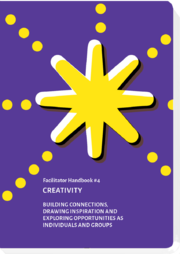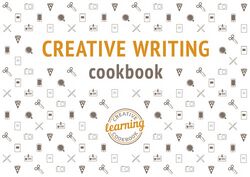Goal
Participants reflect on how they feel, see, and respond to all that surrounds them by activating their sensory knowledge and perception skills through their eyes, ears, skin, muscles, and organs.
Preparation and materials
- Prepare sets of 10 cards in different tones of the same color, creating one set for each group of two. (for the Sight part) Prepare a selection of instrumental music. It should be music that participants will not recognize.
- Have some blindfolds on hand to cover participants’ eyes. Prepare some background information about the different senses and concepts that help to explain the role of senses in the learning process.
- Plan around 30 minutes for each exercise, including time for sharing some of the texts.
Instruction
The following short exercises are intended to help participants explore different senses. Time for sharing texts should be provided after each exercise.
Sight Make-up catalogues can be a useful place to gain inspiration for the different associations we have with colors, such as “Red Fox,” “Impatient Pink,” or “Mauve Madness.” Divide participants into pairs and give each pair 10 cards in different tones of the same color, for instance, 10 tones of blue. Ask them to imagine that they are copywriters working for a cosmetic or fashion brand, and that they have to give names to each of these ten color tones.
Hearing
Invite the participants to find a comfortable spot and close their eyes, then play them the instrumental music you have selected. When it stops, ask them to write a text reflecting the feelings and associations the song evoked for them. Time should be limited to 20 minutes. The name and story of the song can be revealed after some of the stories are shared.
Smell
Ask participants to describe their favorite season by its smell, without revealing which season it is in their text. When the descriptions are read aloud, participants can guess if the text is describing spring, summer, autumn, or winter. If time allows, you might also ask them to also describe the smell of dirty clothes or stinky cheese, and what this smell means to them.
Taste
Ask participants to describe the taste of a common food to a person who is not able to taste – an orange, coffee, or chocolate, for example.
Touch
Divide participants into pairs and have them close their eyes. Give them clay, wet sand, play-doh, or even paper to create different objects. The task is to create a sculpture while working together for 10–15 minutes with their eyes closed, and without speaking. Next, ask them to describe the other person based on their cooperation during the exercise.
Reflection
- Do you use all your senses when you are learning?
- Which senses are the most important and helpful for your learning process?
- How would your world change if you lost one of your senses, and how could you adapt?
- How can working with our senses help us to produce more creative results – ideas, artworks, questions, texts?
Creative Writing Cookbook
Estonian UNESCO Youth Association/Piepildīto Sapņu Istaba/Cooperativa Braccianti. Published under a Creative Commons BY-NC-SA License:
Ilona Olehova
Facilitator and co-author of the Creative Writing Cookbook.
Inese Priedīte
Creative thinking and innovation trainer from Tallinn (Estonia. Co-author of the Creative Writing Cookbook.
Experiences
When writing, we often rely on our visual sense, but a story that we can truly feel needs much more than visual descriptions. It should also make use of sounds, scents, tastes, and physical touch. Using all five senses makes writing more real, and more relevant. For learning processes, it is important to work with different senses, enabling learners to boost their creativity.






